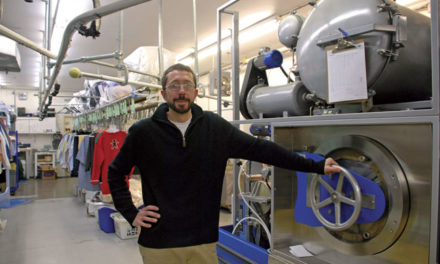BY JANET MANDELSTAM
Dr. R. Daniel Grossman estimates he’s performed at least 35,000 cataract surgeries during his 32 years as an ophthalmologist, and he’s seen many advancements in the procedure. But it’s the last 20 of those operations that have him saying, “I’m blown away.” The difference is that the most recent surgeries have used a computer-generated laser to replace the surgical knife of a traditional cataract operation.
“There’s a lot of excitement around the ophthalmology world about this technique,” Grossman says. “It will become the new standard over time.” To date, there are only 30 clinics performing this procedure in the U.S., and The Eye Center of Southern Indiana, which Grossman founded in Bloomington in 1980, is the only one in Indiana, Kentucky, and much of Illinois.
A cataract is the clouding of the eye’s lens and is the leading cause of blindness among adults. Removal of cataracts is “the most common [eye] surgery in the U.S.,” says Grossman. Roughly 2.5 million operations are performed every year. In the traditional procedure, a surgeon uses a knife to open the cornea at the front of the eye and then opens the capsule surrounding the lens in order to break up the cataract. Now those manual surgical functions can be performed by the laser, which, Grossman says, “is very focused and very fast.” It makes “a perfect, safe incision” in the cornea and lens capsule and breaks up the cataract more finely than a surgeon can, making removal easier.
“It’s gentler, safer, and more precise than any surgeon could do,” Grossman says. The surgeon then implants a new permanent plastic lens.
While all cataract surgery is generally considered safe, “complications can occur,” Grossman says. “The laser reduces complications to the lowest level possible. It also reduces swelling and speeds recovery.”
Grossman and other Eye Center doctors began performing the laser surgeries in December. By mid-January they had used the new technique on 20 patients, “and every one came back the next day with great vision,” he says. “I don’t know if that will always be the case, but so far it’s worked perfectly.”
For more information, contact the Eye Center at 334-1213.
















